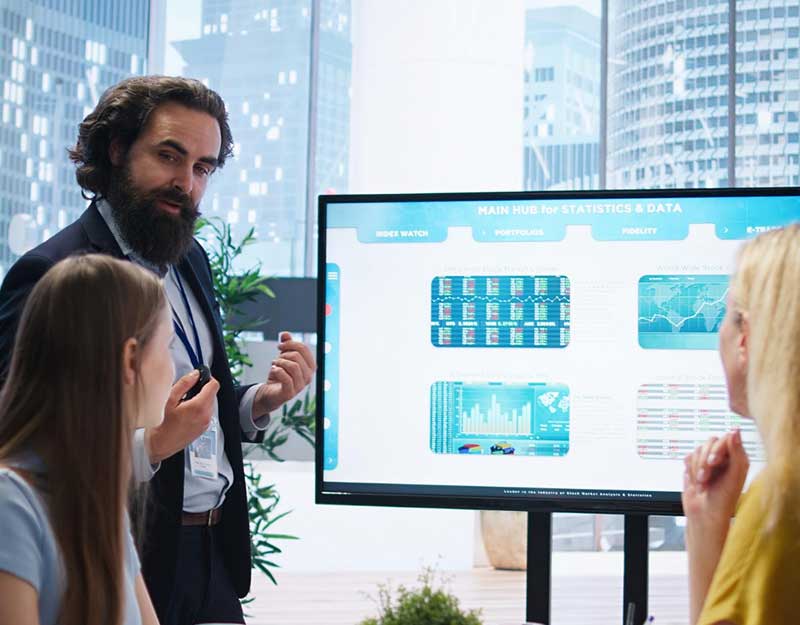Cybersecurity Trends: Where the Industry Is Heading in an Uncertain 2025

The cybersecurity industry faces a rapidly evolving landscape marked by sophisticated threats and technological disruption. Cybercriminals are increasingly using advanced tools like AI and even quantum computing, while models like Ransomware-as-a-Service (RaaS) make attacks more accessible. At the same time, geopolitical tensions and shifting regulations complicate compliance efforts.
In 2024, global cybercrime costs were estimated to reach $9.2 trillion, with projections for 2025 suggesting a rise to $10.5 trillion (Cybersecurity Ventures). Phishing attacks, now enhanced with AI-generated deepfakes, are expected to increase by 25% in 2025. The rise of IoT devices, projected to exceed 30 billion by 2025, expands the attack surface significantly. Let’s explore the top trends shaping this dynamic field.
1. AI in Cybersecurity: A Double-Edged Sword
AI in cybersecurity is one of the most transformative trends for 2025, offering both unprecedented opportunities and significant risks. Artificial intelligence is revolutionizing how organizations detect, respond to, and prevent cyber threats, but it’s also empowering adversaries.
AI-Powered Defense Mechanisms
AI is becoming a cornerstone of modern cybersecurity frameworks. Machine learning (ML) algorithms can analyze vast datasets to identify patterns and anomalies that human analysts might miss. In 2025, we’re seeing:
- Proactive Threat Detection: AI-driven tools like Extended Detection and Response (XDR) platforms use behavioral analytics to detect zero-day exploits and insider threats in real time.
- Automated Incident Response: AI systems can now isolate compromised devices, patch vulnerabilities, and even predict attack vectors before they materialize, reducing response times from hours to seconds.
- User Behavior Analytics (UBA): By establishing baseline behaviors, AI can flag unusual activities, such as unauthorized access attempts or data exfiltration, with greater accuracy.
For example, companies like Darktrace and CrowdStrike are leveraging AI to provide autonomous threat-hunting capabilities, enabling organizations to stay one step ahead of attackers.
The Dark Side of AI
However, cybercriminals are also harnessing AI to enhance their tactics. In 2025, we’re witnessing:
- AI-Generated Deepfakes: Attackers use AI to create convincing phishing emails, voice spoofs, and video impersonations, making social engineering attacks harder to detect.
- Adversarial AI: Hackers are deploying AI to manipulate or evade detection systems, such as by generating malicious code that mimics legitimate traffic.
- Automated Attack Scaling: AI-powered bots can scan for vulnerabilities, exploit weaknesses, and propagate malware at unprecedented speeds.
To counter these threats, organizations must invest in AI-driven defenses while also adopting ethical AI frameworks to ensure their tools remain robust against adversarial manipulation.
2. Cloud Security Trends: Securing the New Frontier
As businesses continue their migration to the cloud, cloud security trends are taking center stage in 2025. The cloud offers scalability and flexibility, but it also introduces unique risks, particularly as hybrid and multi-cloud environments become the norm.
The Rise of Cloud-Native Security
Cloud-native security solutions are gaining traction as organizations seek to protect their distributed infrastructures. Key trends include:
- Zero Trust Architecture: The “never trust, always verify” model is becoming standard in cloud environments. In 2025, zero trust is integrated into cloud platforms, requiring continuous authentication and authorization for all users and devices.
- Cloud Security Posture Management (CSPM): Tools like Prisma Cloud and Microsoft Defender for Cloud are helping organizations identify misconfigurations, enforce compliance, and monitor cloud workloads in real time.
- Secure Access Service Edge (SASE): Combining network security and wide-area networking, SASE provides secure access to cloud resources, especially for remote and hybrid workforces.
Challenges in Multi-Cloud Environments
With 92% of organizations using multiple cloud providers (according to a 2024 Flexera report), securing these environments is a top priority. Common challenges include:
- Data Sovereignty and Compliance: Varying data protection regulations across regions complicate compliance in multi-cloud setups.
- Shared Responsibility Model: Misunderstandings about cloud provider and customer responsibilities lead to vulnerabilities, such as unpatched servers or misconfigured storage buckets.
- API Security: As cloud services rely heavily on APIs, securing these interfaces against exploitation is critical.
In 2025, organizations are adopting unified cloud security platforms that provide visibility across all cloud providers, coupled with automated remediation to address vulnerabilities swiftly.
3. Quantum Computing: A Looming Disruptor
Quantum computing, though still in its infancy, is poised to reshape cybersecurity by 2025. While practical quantum computers are not yet mainstream, their potential to break current encryption standards is driving urgency in the industry.
Post-Quantum Cryptography (PQC)
In response to quantum threats, the National Institute of Standards and Technology (NIST) is accelerating the development of PQC algorithms. By 2025, organizations are:
- Transitioning to quantum-resistant encryption protocols, such as lattice-based cryptography, to safeguard sensitive data.
- Conducting audits to identify systems reliant on vulnerable algorithms like RSA and ECC.
- Collaborating with industry leaders to standardize PQC frameworks, ensuring interoperability across ecosystems.
Preparing for “Harvest Now, Decrypt Later” Attacks
Cybercriminals are already collecting encrypted data with the intent to decrypt it once quantum computers become viable. To mitigate this risk, organizations are prioritizing data lifecycle management, ensuring sensitive information is encrypted with quantum-safe algorithms and has a limited retention period.
4. Privacy-Enhancing Technologies (PETs)
As data privacy regulations grow stricter in 2025, PETs are gaining traction. Innovations like homomorphic encryption, federated learning, and differential privacy enable secure data processing without exposing sensitive information. These tools are especially vital in sectors like healthcare and finance.
5. Cybersecurity Workforce and Skills Gap
The global shortage of cybersecurity professionals—around 4 million—remains a pressing issue. Organizations are responding by upskilling employees, promoting workforce diversity, and turning to Managed Security Service Providers (MSSPs) for expert support and round-the-clock protection.
6. Regulatory and Compliance Shifts
Regulatory frameworks are evolving to keep pace with cyber threats. New regulations in regions like the EU and Asia-Pacific will impose heavier fines for non-compliance. Governments are introducing guidelines for ethical AI use in cybersecurity, addressing biases and transparency. Following high-profile supply chain attacks, frameworks like NIST’s Cybersecurity Supply Chain Risk Management (C-SCRM) are becoming mandatory.
7. The Human Factor: Cybersecurity Awareness and Training
Despite technological advancements, human error remains a leading cause of breaches. Regular training to help employees recognize AI-generated phishing attempts. Interactive platforms to engage employees in cybersecurity best practices.
Conclusion
In 2025, cybersecurity is defined by both innovation and escalating threats. To stay resilient, organizations must stay informed on key trends, leverage AI in cybersecurity, and strengthen cloud security. Success hinges on a proactive, adaptable approach that combines advanced tech with strategic foresight and human awareness. In an uncertain digital future, readiness will be the key to security.





